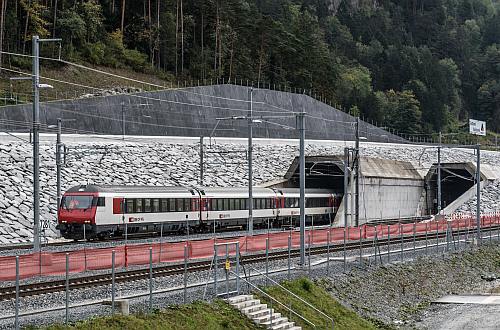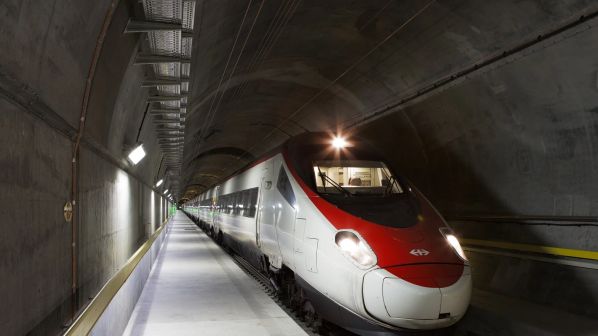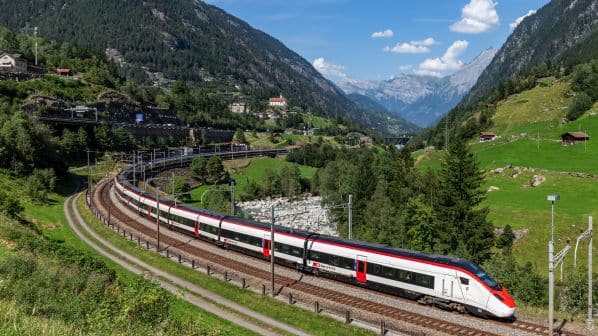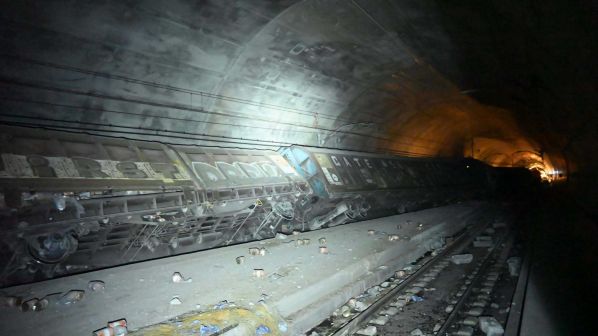SWISS Federal Railways (SBB) has confirmed that the 57.1km Gotthard Base Tunnel will fully reopen on September 2, subject to approval from the Federal Office of Transport (OFT).
Test runs through the tunnel using empty trains are expected to start next month, with selected commercial services using the repaired stretch from August. Most of these will be freight trains, but late-running passenger services will also be allowed to use the repaired section.
In a press briefing on June 27, Mr Peter Kummer, SBB’s head of infrastructure, said that with much work remaining before all services can resume, the deadline is tight.
A freight train derailment in the western bore of the world’s longest railway tunnel on August 10 2023 led to a complete closure for several weeks. Services then restarted using the eastern bore, with capacity progressively restored by using the undamaged northern section of the western bore.
A cracked wheel was identified as the cause of derailment that damaged track, two high-speed switches and the doors that seal the connecting tunnel between the two main running tunnels at Faido, 17km from the southern portal.
Both passenger and freight services have been significantly disrupted by the closure. Asked what the total financial cost to SBB’s customers is likely to be, Kummer responded: “I can’t answer that, as I don’t have those numbers.” SBB currently estimates that property damage, including loss of earnings, will total approximately SFr 150m ($US 167m), of which around SFr 140m is insured.
Kummer also ruled out an earlier opening date. He emphasised that an extensive testing programme, similar to that carried out before the tunnel first opened in 2016, is required before the tunnel can reopen to commercial traffic.
SBB has been working on measures to prevent similar accidents, including using high-definition photography to determine wheelset condition and the increased use of train monitoring equipment. The railway is also considering installing trackside derailment detectors at the crossovers where trains can change tracks outside and within the tunnel. Due to the time required for planning and installation and complex work to integrate these with existing systems, SBB says implementation can be expected in the medium term.
However, once the tunnel fully reopens, SBB will immediately impose a temporary speed limit of 160km/h (down from 230km/h) at each portal at the point where trains can change tracks. The operator says this safety measure will not impact journey times, but will reduce the ability to recover time in the event of late running.
Accident report
The final report on the cause of the accident by the Swiss Transport Safety Investigation Board (STSB) remains ongoing. In an interim report, STSB determined that a broken wheel disc led to the derailment. SBB does not own any freight or passenger rolling stock with such wheelsets, but they have been fitted to other wagons in Europe.
Following the publication of STSB's interim report, OFT launched an appeal via the European railway authorities, calling on all owners that have wagons with similar wheels to check them and, if necessary, take them out of service.
Meanwhile, SBB has taken advantage of the partial closure of the western bore to bring forward scheduled maintenance work.
From September 2 inter-city services using the tunnel will resume at half-hourly frequencies and the journey time between Zürich and Lugano will once again be reduced to less than two hours. From the same date, the cross-border service from Frankfurt, Germany, via Zürich to Milan, Italy, will be operated with new Giruno trains supplied by Stadler.



